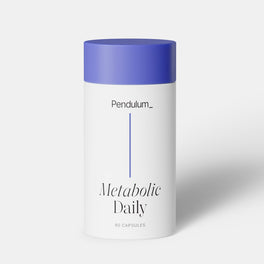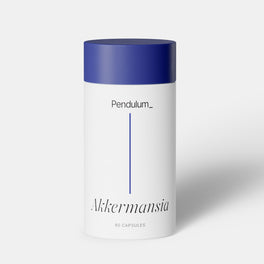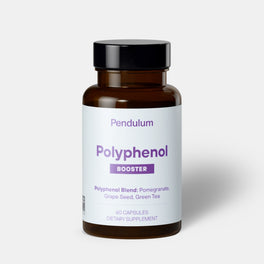Looks like your
cart is empty

Metabolic Daily
Improve metabolism

Akkermansia
Improves gut health

Polyphenol Booster
Increase antioxidants to protect cells
Stay in touch about special discounts, nutrition tips and additional education.
Looks like your
cart is empty

Improve metabolism

Improves gut health

Increase antioxidants to protect cells
Written by: Jennifer Chesak, MSJ
Medically reviewed by: Nesochi Okeke-Igbokwe, MD, MS and Colleen Cutcliffe, PhD
If you’re looking to boost your gut health, you may know that prebiotics and probiotics can be beneficial. But if they were in a head-to-head competition, would one outperform the other? In truth, rather than “getting in the ring” for a fight, these gut health boosters work together to support your digestive tract and overall health.
Gut heath is having a moment. Research has made clear that a healthy gut informs everything from metabolic health to mental health to skin health. Gut health is so hot right now that we’re surprised it can’t fold your laundry or improve your finances.
All kidding aside, we’re clear that digestive support is crucial, but what’s less clear, in the media at least, are the right strategies for giving your gut the help it needs. That’s why you might be wondering about prebiotics vs. probiotics. Which is better? The answer is both. They’re equally necessary because they work together.
“Prebiotics are the food for probiotics and are essential for a healthy, diverse gut microbiome to keep it thriving and offering benefits to us as the human host,” says Christina O’Connor, RD, with Pendulum Therapeutics.

That’s right: You and your gut play host to about 100 trillion microbes. (Think bacteria, fungi, and more). We’ll get into the specifics below, but in a nutshell, probiotics are the live bacteria or yeast living in the gut, and prebiotics are part of certain foods we eat that end up feeding and supporting probiotics. They share a mutually beneficial relationship.
Of note: All prebiotics can be gotten from food, whereas some next-generation probiotics (like Akkermansia) haven't been found in any foods to date. So you can only get those through supplementation.
Let’s explore this topic more in-depth.
The term probiotics can refer to two things: one, live microorganisms that live in the gut, and two, live probiotic strains you ingest from foods and supplements.
“Probiotics aid digestion and promote gut health by balancing the gut microbiota, enhancing immune function, and [helping to] manage certain medical conditions,” says Jennifer McManus, RD, with Pendulum Therapeutics.
When you’re born, you take on aspects of your birthing parent’s microbiome. Then as you grow and develop, your diet and other lifestyle habits shape the makeup of the community in your gut.
You can also consume probiotics, which are live strains, through foods such as yogurt (keep reading for more examples) or taking probiotic supplements.
“Prebiotics are non-digestible food components, typically fiber, that promote the growth or activity of beneficial bacteria [or probiotics] in the gut,” McManus says. Some foods contain prebiotics, as do some supplements.
In short: All prebiotics are a type of fiber, but not all fiber is prebiotic.
The main difference between prebiotics and probiotics is that the former feeds the latter. Prebiotics provide food for probiotics, which helps them grow and thrive, according to McManus. “When consumed together, they work synergistically to maintain a healthy gut microbiome,” she says. “Probiotics can support digestion and immune health, while prebiotics help probiotics stay active and effective. This combination can enhance overall gut health and well-being.”

Prebiotics, which are fuel sources for the probiotics in your gut, can be found in certain foods. O’Connor provides some examples.
The best food sources that provide live probiotic strains are fermented foods, including the following.
“[Sauerkraut and kimchi both] make delicious slaws to top tacos, mix into salads, or serve alongside pulled meats,” O’Connor says. “You'll also find live probiotics in cultured dairy products like yogurt and kefir. Bonus points if you make your own at home!”
Again, prebiotics are vital food for probiotics. “It's what you call a symbiotic relationship,” O’Connor says. “They are working together to ultimately benefit us as the host.”
How it works:

SCFAs benefit several aspects of health, including:
As noted, both prebiotics and probiotics are available as supplements. Whether you take one or the other, or both, will depend on factors unique to you.
“As a dietitian,” O'Connor says, “I generally recommend getting prebiotics through whole foods, since they offer additional nutrients and fiber. However, supplements can be a helpful option when dietary sources are limited or hard to access.”
Remember prebiotics serve as fuel for the probiotics in your gut. But what happens if your microbiome lacks diversity? “Probiotic [supplements] can be especially useful when someone may be missing keystone strains, such as Akkermansia or butyrate-producing bacteria,” she says.
Before taking any supplement, a conversation with your healthcare provider is always a good idea. They can evaluate your specific symptoms, concerns, or health goals and then recommend which supplement type is right for you or if you need both.
Prebiotics and probiotics are generally considered safe. However, when you first start taking a prebiotic or probiotic supplement, or if you boost your intake of prebiotic or probiotic foods, you may notice some initial minor gastrointestinal (GI) side effects, including:
This is usually a sign that your microbiome is adjusting. As it becomes more balanced, these symptoms should resolve. With diet, a good plan is to slowly add prebiotic and probiotic foods to see how you react before adding more over time.
If you have underlying conditions, such as small intestinal bacterial overgrowth (SIBO), inflammatory bowel disease (IBD), or irritable bowel syndrome (IBS), talk to your provider about which foods and supplements (including specific probiotic strains) are best for your circumstances, and how long you should take them.
IBS is one of the most common digestive disorders. The American College of Gastroenterology estimates that 10% to 15% of adults in the United States have the condition, though only about 5% have received a diagnosis for their symptoms (which may include diarrhea, constipation, or a mix, along with abdominal discomfort).
Prebiotics and probiotics may help alleviate some IBS symptoms by promoting the growth of beneficial bacteria and supporting the production of helpful compounds in the body, but the research is mixed.
A 2019 research review investigated probiotic use for IBS. The researchers found that across 11 total studies included in the analysis, seven showed that probiotic supplementation provided participants with significant relief from IBS symptoms, when compared with placebo.
Additionally, a 2020 randomized clinical trial identified Lactobacillus acidophilus and Bifidobacterium lactis as two strains that reduce IBS abdominal discomfort and overall symptom severity.
However, the American Gastroenterological Association says research is insufficient to recommend probiotics for IBS. We simply need more clinical trials to show effectiveness.
Modifying your diet to include prebiotic and probiotic foods is a great way to boost gut health, whether you have IBS or are experiencing unpleasant digestive issues.
“Try adding oats or legumes to your breakfast or lunch, enjoy a side of chilled potato salad, and sip on green tea during the day,” O’Connor says. “A variety of fiber-rich fruits and vegetables in your meals can also keep your gut bacteria well-fed and thriving.”
Meanwhile, avoid ultra-processed foods as much as possible. These often contain preservatives, artificial dyes, added sugar, and more—all of which can negatively impact the gut microbiome.
Gut health goes beyond diet, however. The following lifestyle changes can also help support your GI tract and overall health.
When considering taking prebiotics vs. probiotics, one isn’t necessarily better than the other, since they work together. Prebiotic fiber is present in some foods, and you can also take prebiotic supplements. Probiotics are the live microorganisms that live in the gut or that are present in some foods or supplements. Prebiotics feed the probiotics in your gut, which then support digestive and overall health.
If you’re experiencing digestive issues—such as bloating constipation, gas, frequent illness, skin issues, and more—you may have a gut microbiome imbalance. Prebiotics can help feed the beneficial microbes (probiotics) in your gut to restore balance and ease symptoms. However, if you have ongoing digestive issues, consult a knowledgeable clinician for a treatment plan.
Prebiotics don’t directly flatten your stomach. However, an imbalance in the gut microbiome could lead to bloating, constipation, gas, and more. Upping your prebiotic intake through foods or supplements may help rebalance your gut microbiome and reduce GI symptoms, including bloating or distention.
Content is for educational purposes only and has not been evaluated by the Food & Drug Administration. Statements and products are not intended to diagnose, treat, cure, or prevent any disease.